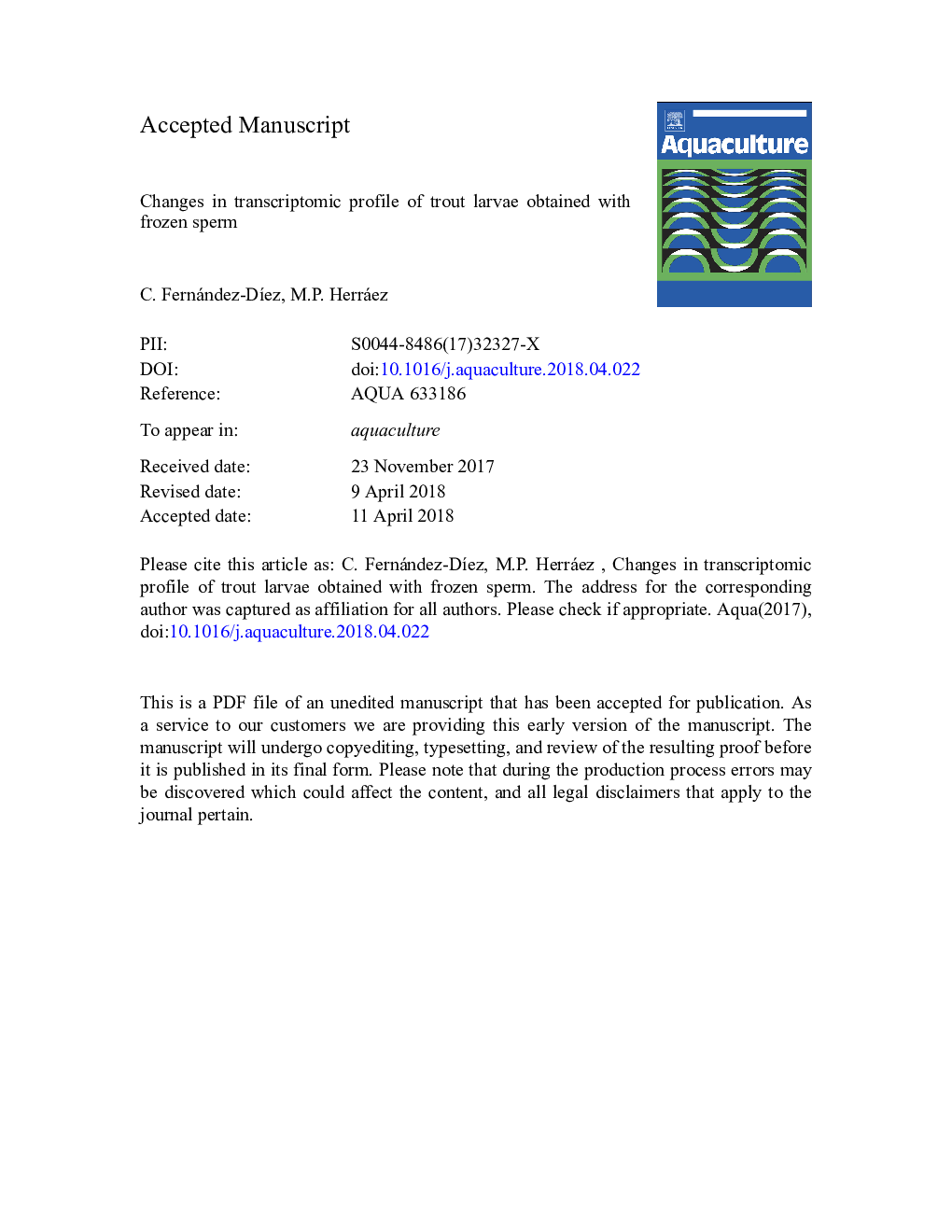| Article ID | Journal | Published Year | Pages | File Type |
|---|---|---|---|---|
| 8493195 | Aquaculture | 2018 | 40 Pages |
Abstract
Sperm cryobanking is a common procedure in animal production, including aquaculture, and animal conservation. The accuracy of the method relies in the faithful preservation of the sperm quality in order to provide a healthy progeny. Cryopreservation is prone to promote DNA damage that could compromise this objective. As we demonstrated in a previous study, trout embryos obtained with sperm damaged with UV irradiation, can generate tolerant conditions to genotoxic damage that allow the progression of development. This tolerant scenario would increase the chances of affecting gene expression in the progeny. In order to check whether the DNA damage promoted by cryopreservation provides a similar progeny to those from fresh sperm, we have developed an in silico analysis of the transcriptomic profile of trout larvae, with apparently normal phenotype, obtained from fresh sperm or from sperm frozen using two procedures that rendered two levels of DNA damage. Data, deposited in the Gene Expression Omnibus database (GEO bank_Accession number GSE52217), were processed and the Panther online database was used for the functional and ontological study. We found differential expressed genes (DEGs) in those progenies from cryo-damaged sperm, which were mainly implied in metabolic processes and in other cellular processes such as differentiation, signalization, trafficking, etc. We have demonstrated that the effects of sperm DNA cryodamage go beyond from its fertilization ability and, particularly in fish, affect the transcriptomic profiling of the obtained larvae. Our results encourage to strictly evaluating the DNA integrity prior to the adoption of any cryopreservation sperm protocol, mainly in the aquaculture field.
Related Topics
Life Sciences
Agricultural and Biological Sciences
Aquatic Science
Authors
Fernández-DÃez C., Herráez M.P.,
